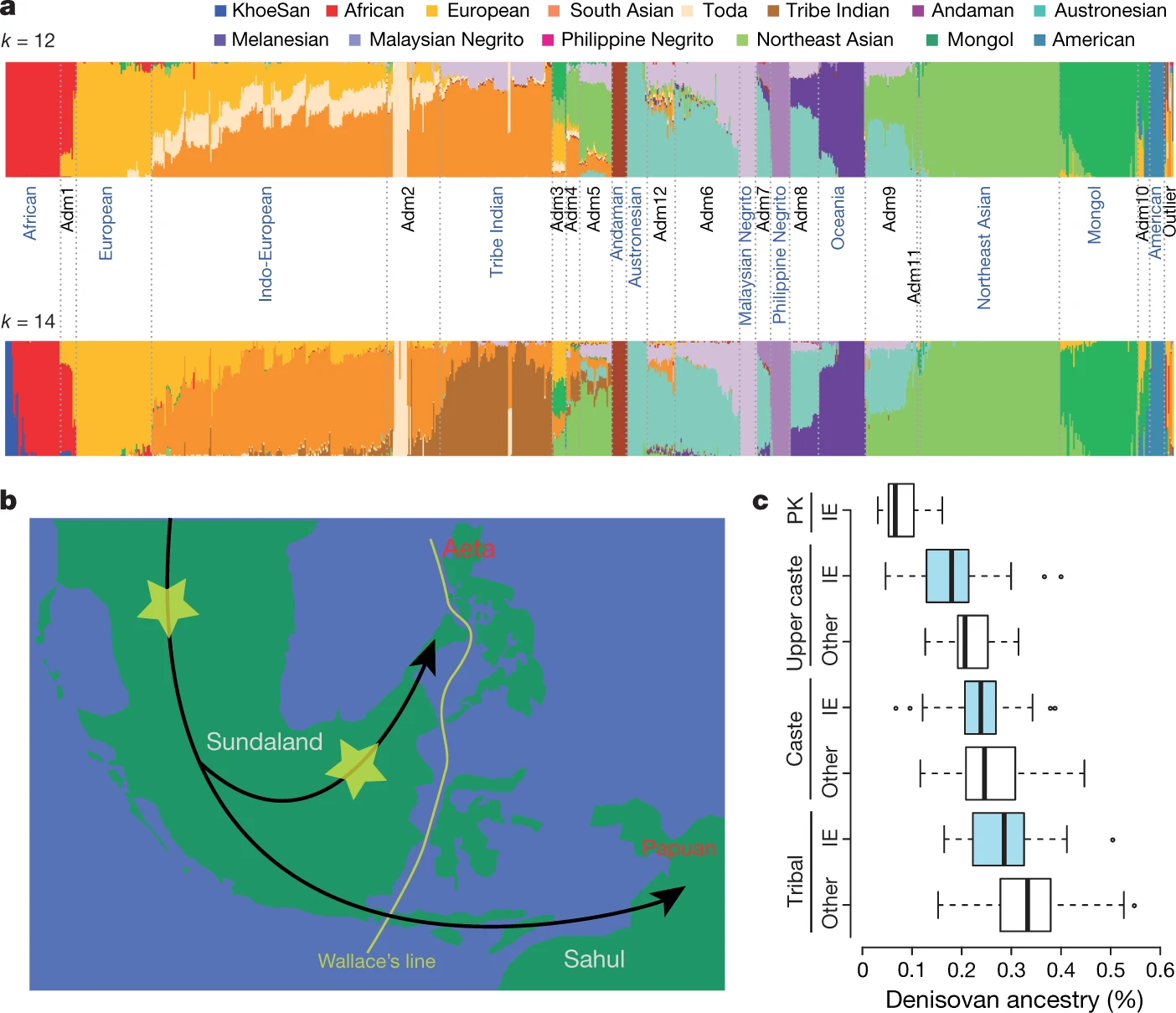
The largest study of human genome ever carried out in Asia has added strength to so-called theory of Aryan migration theory into the Indian subcontinent. The study was published in the latest issue of scientific journal Nature.
ARYAN MIGRATION THEORY
According to the Aryan migration theory, the Indian subcontinent saw a massive influx of a pastoral people from Central Asia after the downfall of forts built by the people of Indus Valley civilization around 1,500 BC.
These nomads, who are estimated to have come from the Sintashta or Andronovo culture east of the Ural mountains, are supposed to have brought the male lineage (haplogroup) known as R1a.

Today, it is estimated that nearly 70% of the Brahmin males in North India carry this gene type, while its percentage drops off drastically as one goes down the caste hierarchy.
Unlike the urbanized Indus Valley people, the so-called Aryans were largely a pastoral people who depended on the cow for their sustenance. Nevertheless, they brought with them several new technologies to the Indian subcontinent — including iron weapons and implements, the chariot and the domesticated horse.
Similarly, the language that is spoken in North India and Sri Lanka have been heavily influenced by the language believed to have been spoken by these people. Because of another movement of such groups to places like Eastern Europe and Germany, the languages spoken in these places today share many common words with those spoken in North India.
However, there has always been controversy on the exact origin of the R1a people, or the Aryans, as many Indians claim that these people originated in India and spread out to Central Asia, Eastern Europe and Germany.
DENISOVAN FACTOR
It is in this context that GenomeAsia 100k, a project that aims to record and analyze the full genome of 100,000 Asian individuals, has come up with the results of its pilot study of 1,739 individuals, including 598 from 55 ethnic groups within India.
One of the most interesting observations made in the pilot study is on the presence of genes from Denisovans — an extinct type of early humans that used to live in Asia.
Like Neanderthals in Europe, the Denisovans were exterminated by Homo Sapiens, but not before some of them interbred with Sapiens and passed on their genes to today’s Asian population.
Because of this interbreeding, any group of people from Europe today are likely to show some Neanderthal genes, while any group from Asia is likely to show some Denisovan genes.
Using this insight, it is possible to check if a particular population group is largely European in origin or Asian in origin.
Based on this premise, GenomeAsia 100k suggests that some groups in the Indian Subcontinent tend to show a larger European genetic heritage, while others show a more marked Asian ancestry.
For the purpose of this study, the researchers divided the samples from the Indian subcontinent into four groups — Pakistani, Hindu Upper Caste, Hindu Non Upper Caste and Tribal groups.
Each of these groups were further divided based on whether they were from North India (Indo-European language speakers) or from other parts (Dravidian and other language speakers).
The analysis showed that the proportion of Denisovan genes were the lowest in Pakistani samples, followed by Hindu Upper Castes in North India (Indo European language speakers), Hindu Upper Castes in other places, Non Upper Castes in North India, Non Upper Castes in other places, Tribals in North India and Tribals in other places.
The highest proportion of Denisovan genes — around 0.32% was found in Tribals in other places, followed by around 0.28% among Tribals in North India.
The proportion for non-upper castes in North India and other places were largely similar at around 0.22-0.23%.
The proportion was around 0.18% for upper castes in North India and 0.20% in other areas. For Pakistani samples, it was just around 0.06%.
This pattern, said the paper published in Nature, strongly suggests that a group of Indo-European speaking peoples entered India from the North West side and interbred with the locals.
“We found that the average levels of Denisovan ancestry were significantly different between the four social or cultural groups. Our results are consistent with the scenario that Indo-European-speaking migrants who entered the subcontinent from the northwest admixed with an indigenous South Asian (ancestral south Indian) group who had higher levels of Denisovan ancestry,” it said, without using the term ‘Aryan’.
The authors also found peculiarities in the Denisovan genetic admixture in other parts of Asia, particularly the Malay peninsula, Indonesia and Philippines — all of which used to be part of an enormous, interconnected land mass known as Sundaland around 21,000 years ago.
“Our dense sampling of Asian populations enables the examination of Denisovan admixture in greater detail than has been previously possible, providing information about population splits or in-flows that occurred at or after the time of admixture.
“Our estimates of Denisovan ancestry were highest in Melanesians and the Aeta [an indigenous group in northern Philippines], intermediate in the Ati [a group in central Philippines] and groups from the Indonesian island of Flores, and low (but still significantly greater than 0) in most south, east and southeast Asian populations. We found high levels of Denisovan ancestry in Philippine Negrito groups but not in Malay or Andaman Negritos…”